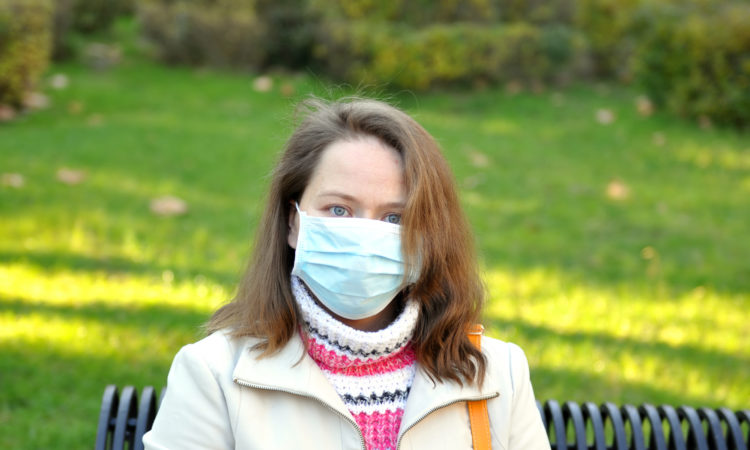
At last, a ray of hope.
For the Northern Hemisphere, anyway.
For weeks, the experts have debated whether COVID-19 is seasonal – meaning, would new infections stop when the weather gets warmer?
Because it’s a new virus, nobody really knows. MERS, which is also a coronavirus, is not discouraged by the heat of the Middle East.
We still don’t know for sure, but we do have a lot more data about COVID-19 than we did in January, and so there’s reason to believe infections will die down, especially because it’s April and the weather is warming.
We have five reasons to believe relief – for the Northern Hemisphere – lies just ahead:
1. Changes in Latitude, Changes in Viral Attitudes
The virus was first detected in Wuhan China in December and began spreading furiously in January – winter.
Scientists at MIT analyzed the record and found 90% of COVID-19 infections occurred where temperatures were between 37.4 and 62.6 degrees Fahrenheit. Not too cold and not too hot.
When you map out temperature distributions around the globe for January, you see Wuhan, South Korea, Northern Iran, Northern Italy, Spain, Washington State, and New York City all had around the same temperature ranges.
And that makes sense, considering the virus evolved in Wuhan.
And maybe that explains why India is not hard-hit even though it’s close to China. Because it’s densely populated with undernourished people, it would otherwise seem to be an obvious place to host a pandemic. (As it did in 1918.)
As the protein layer surrounding the virus heats up, it gets softer. That means it’s easier to break up and destroy.
2. If It’s Not the Heat that Stops the Virus, Maybe It’ll Be the Humidity
Cooler air is generally drier air, and COVID-19 seems to prefer 40-60% humidity.
Therefore, places with high humidity experience less spread of the disease.
That actually makes sense because it’s more difficult for the virus to just hang around in humid air after an infected person has shed it. In high humidity, it drops to the ground faster.
3. COVID-19 Doesn’t Like Ultraviolet
The Northern Hemisphere is colder during the winter months because the upper half of the Earth is tilted away from the sun.
That means we get less heat from the sun’s rays because they hit at an angle, so they’re less direct.
And that also applies to the nonvisible portion of sunlight’s spectrum – ultraviolet.
The sun’s UV radiation kills microorganisms by destroying their nucleic acids and their DNA.
That’s why devices that produce intense UV radiation are used to sterilize medical equipment, air, and drinking water.
Mainstream medical experts are already “debunking” the concept of sunlight killing COVID-19.
I’m NOT saying standing in sunlight will *cure* you.
However, as the sunlight begins hitting the Northern Hemisphere more directly, that could help destroy COVID-19 on open, exposed surfaces.
The more it’s destroyed, the less it will spread.
4. More Intense Sunlight Also has Another Benefit
When it hits human skin, it forms Vitamin D.
Vitamin D is especially important for maintaining the strength of your immune system.
The former chief of the Centers for Disease Control and Prevention, Dr. Tom Friedan, says Vitamin D may reduce the risk of COVID-19.
He points out 40% of Americans are deficient in this vitamin. Yet it lowers your risk of getting any respiratory infection, protects against harmful viruses and regulates cytokines to help prevent the cytokine storm overreaction that kills many COVID-19 patients.
He supports the theory that influenza and colds are seasonal because people are exposed to less sunlight during winter months, and so their immune systems are weaker.
Because of the tilting of the planet, the sun’s rays are indirect in winter. That means their ultraviolet spectrum is not intense enough to produce Vitamin D.
That’s especially true the farther north you live, and the darker your skin – and the less time you spend outdoors in general.
Therefore, most people should supplement with Vitamin D from around September or October through April or May.
5. More Light, Better Life
Seeing more and brighter sunlight in the morning helps keep your body’s circadian rhythms in tune – improving your overall health.
Also, for myself and most people, sunlight just makes us feel better. It’s a cliche, but it’s true. Where I live, most of March was rainy, cloudy, dull and dreary, making the COVID-19 news even more depressing.
It’s still depressing, but April is bringing more confidence along with more sunshine and higher temperatures.
That helps relieve stress – and relieving stress by itself boosts your immune system.
What About the Southern Hemisphere?
If all this turns out to be accurate (nobody yet knows for sure), it could be bad news for people below the equator – much of Africa, South America, and Australia.
The main factor is whether those countries allow the virus to spread.
And we don’t know yet whether COVID-19 will continue to pop up every winter, like seasonal flu and colds.
Or whether it will burn out as the Spanish flu of 1918 did.
And it’s important to remember that, until it’s no longer spreading where you live, you must take all reasonable precautions against it.
Heat, humidity, and sunlight are not substitutes for social distancing.
https://www.foxnews.com/opinion/former-cdc-chief-tom-frieden-coronavirus-risk-may-be-reduced-with-vitamin-d
https://www.usatoday.com/story/news/factcheck/2020/03/30/fact-check-sunlight-does-not-kill-new-coronavirus/2931170001/
https://en.wikipedia.org/wiki/Ultraviolet_germicidal_irradiation
http://sciencenetlinks.com/science-news/science-updates/uv-disinfectant/
https://www.youtube.com/watch?v=rNOc2lnWDlM
https://www.medrxiv.org/content/10.1101/2020.03.18.20036731v1







